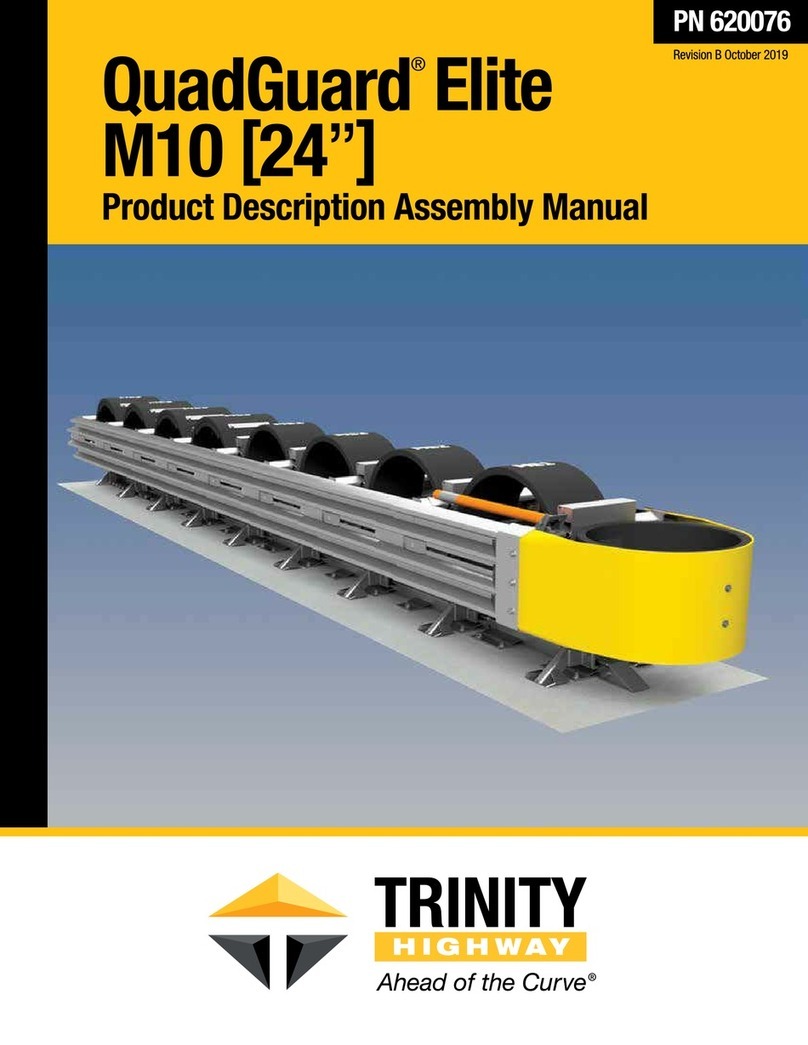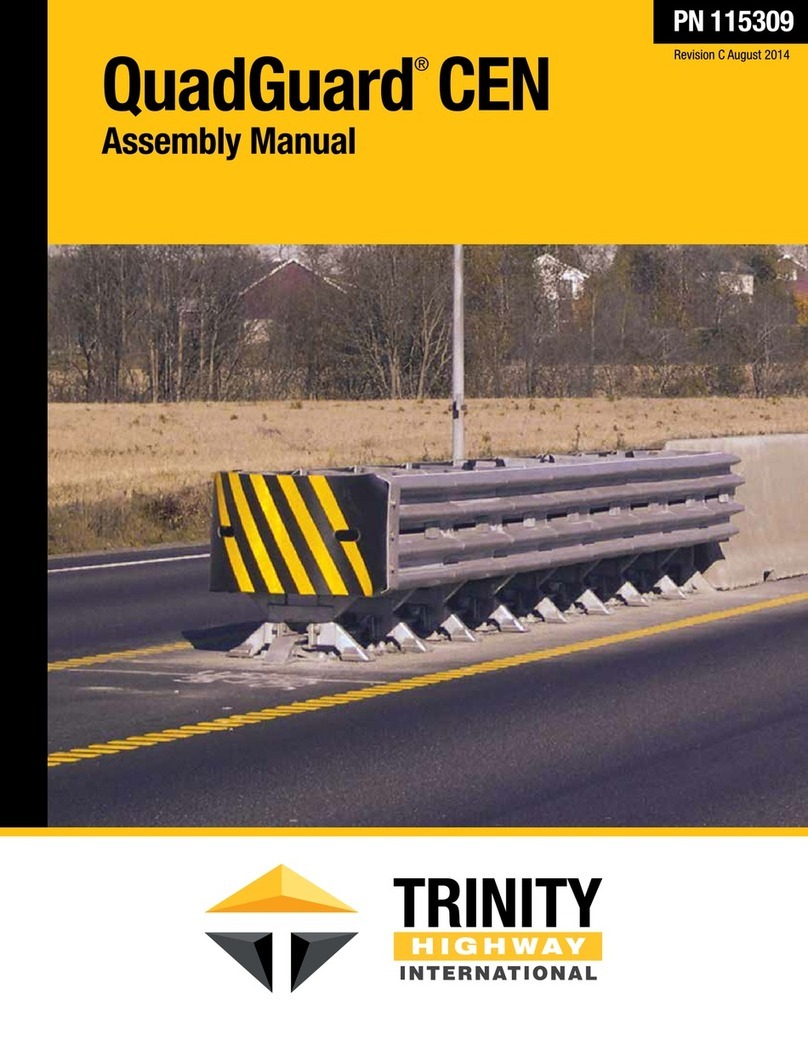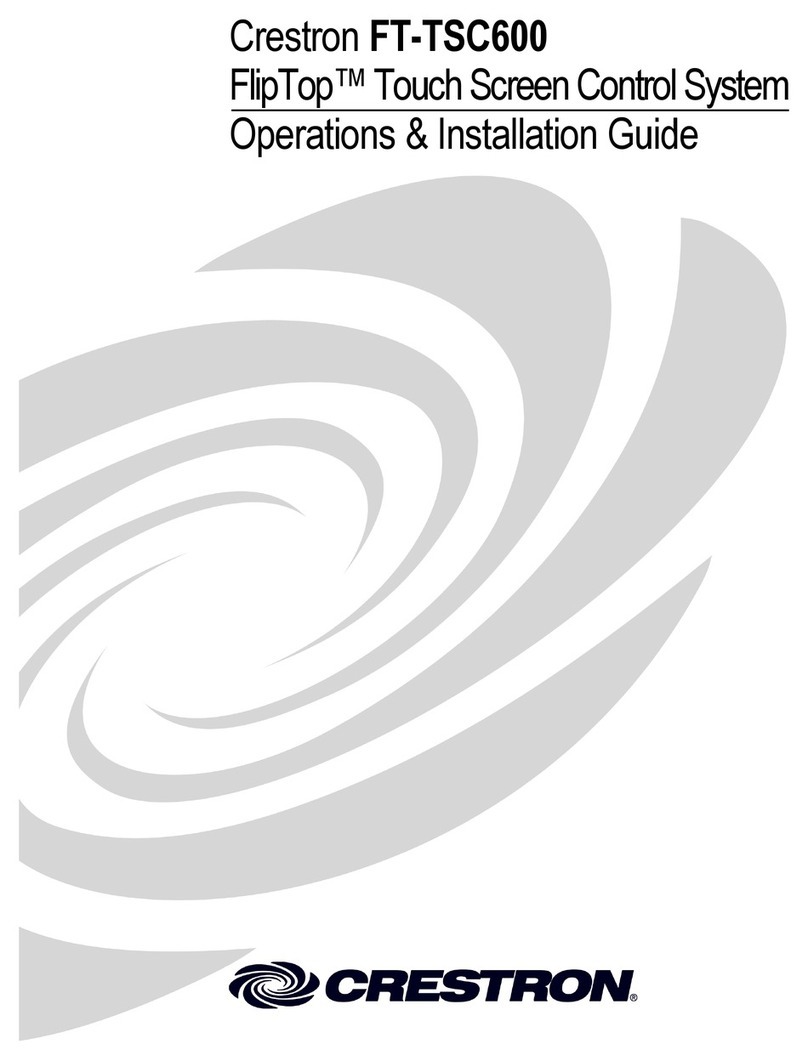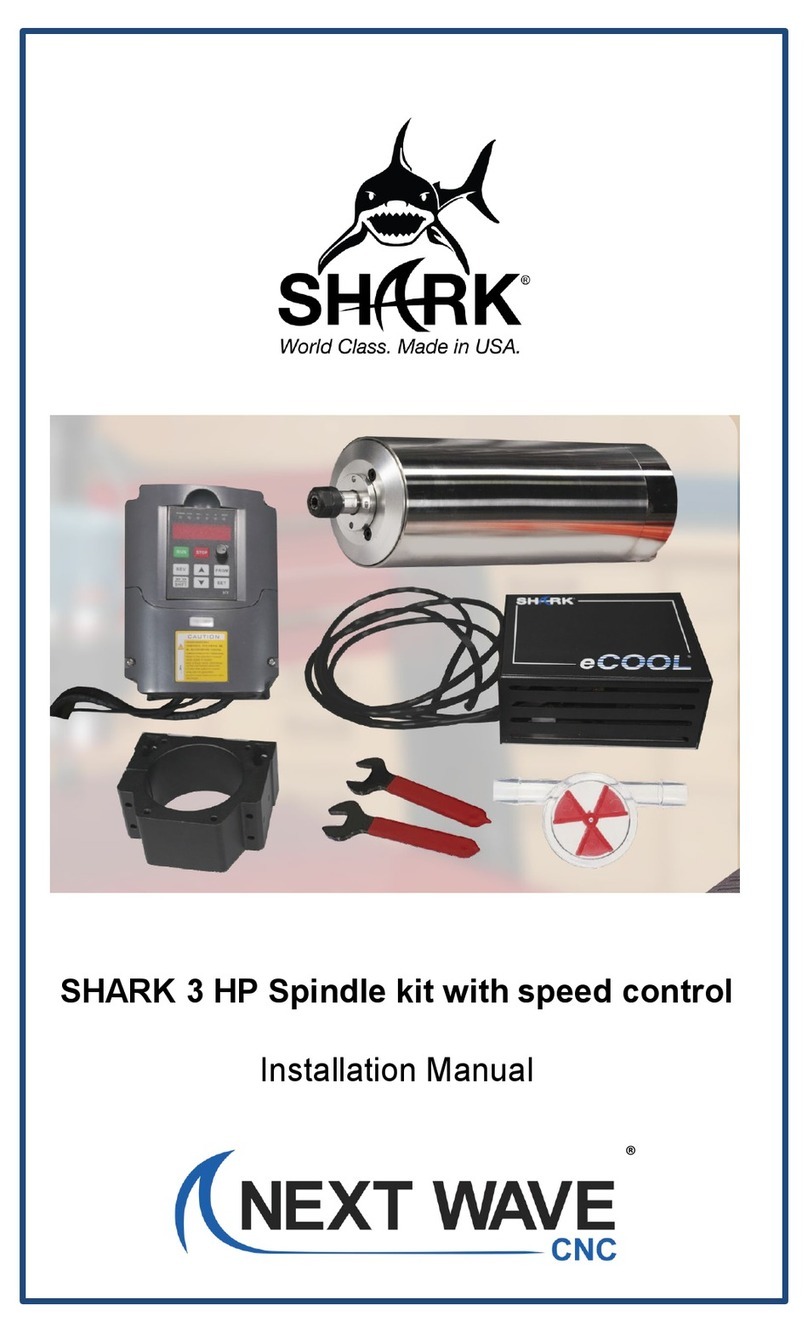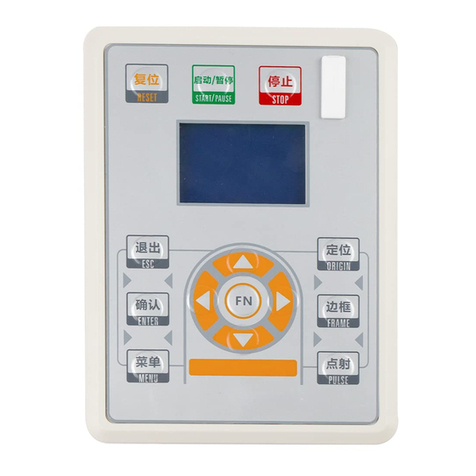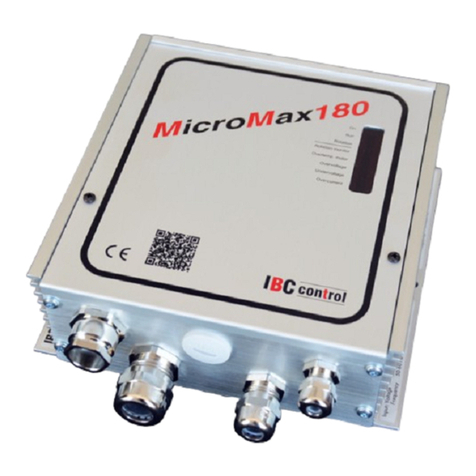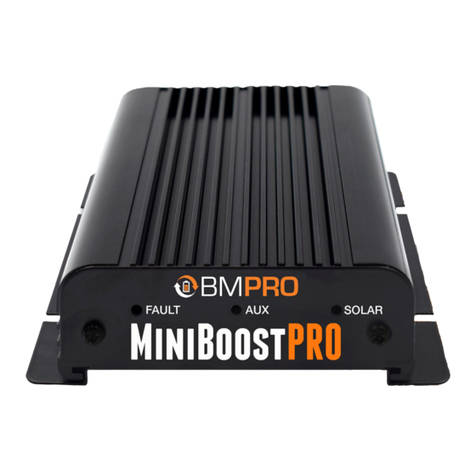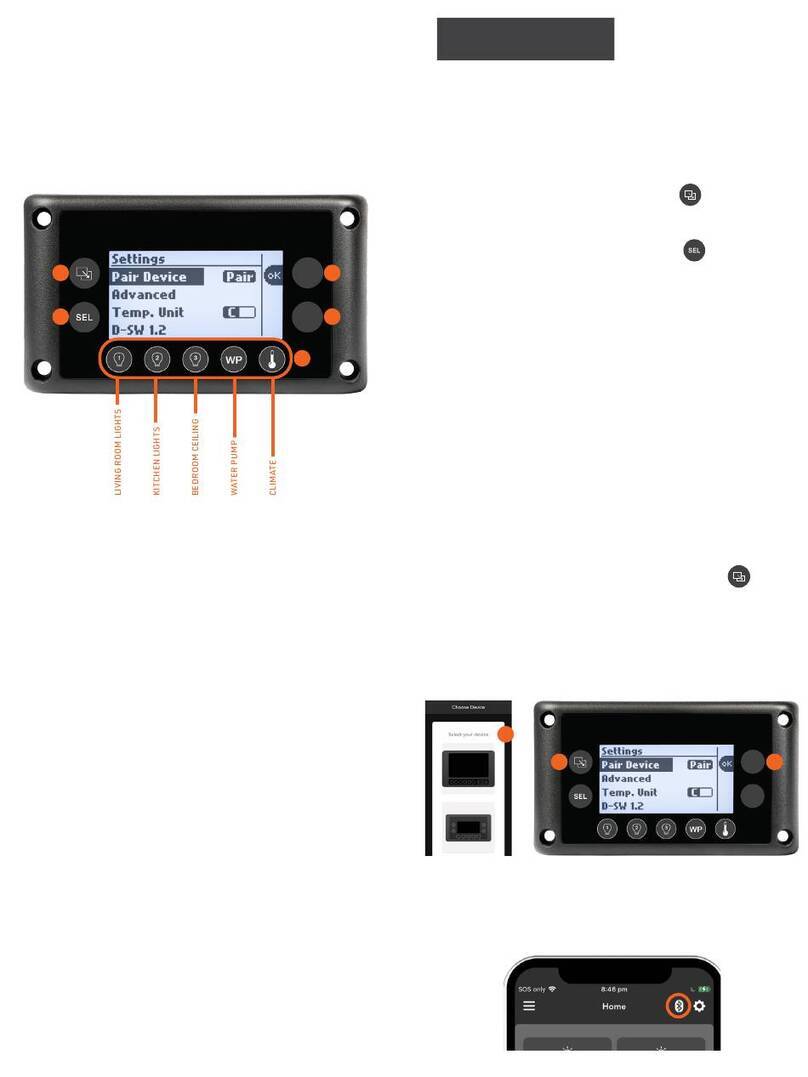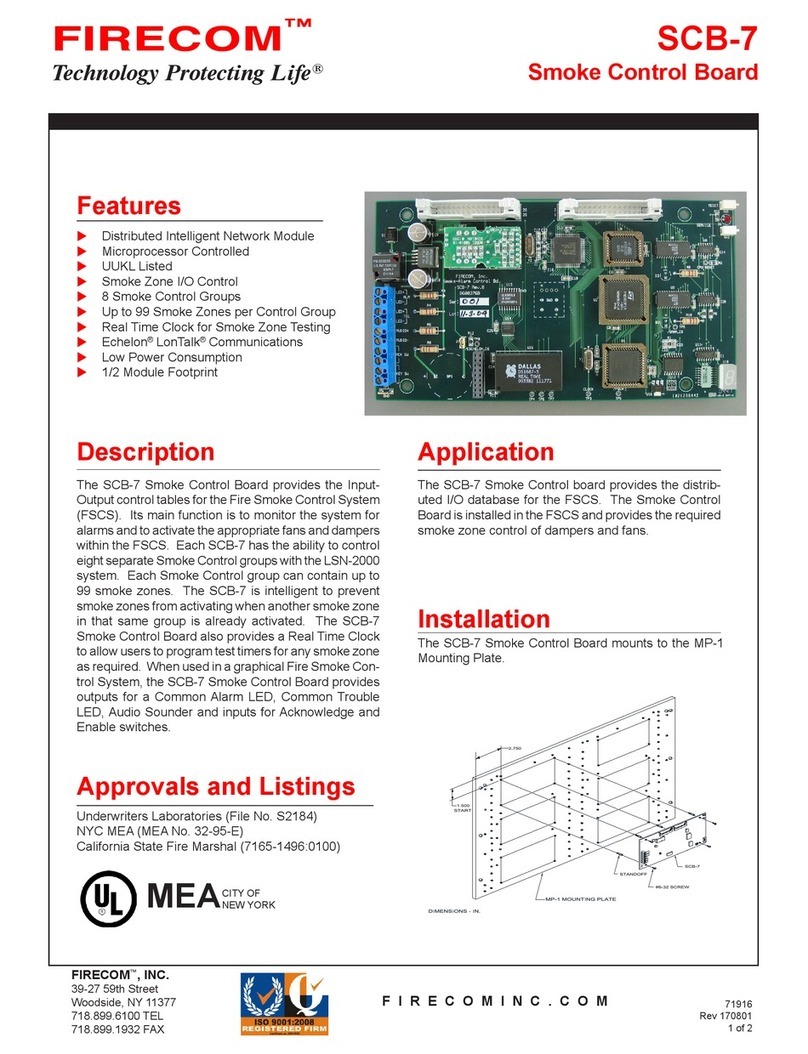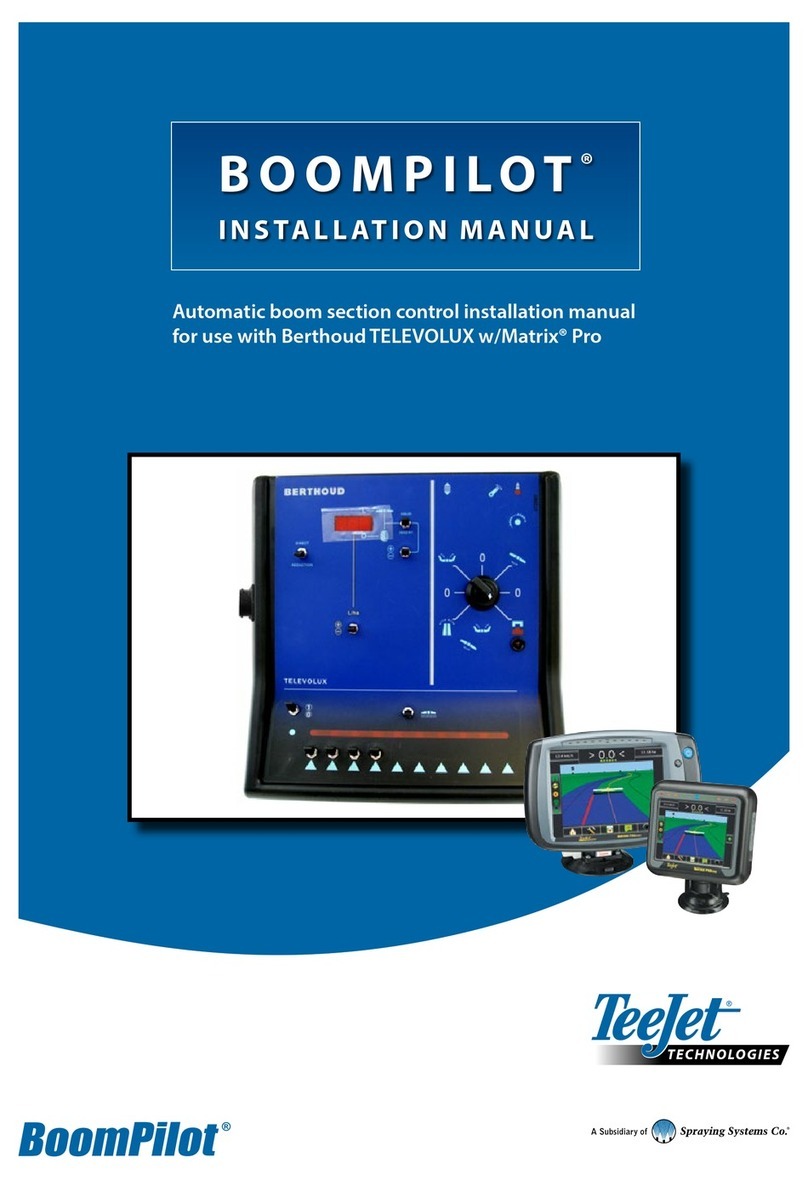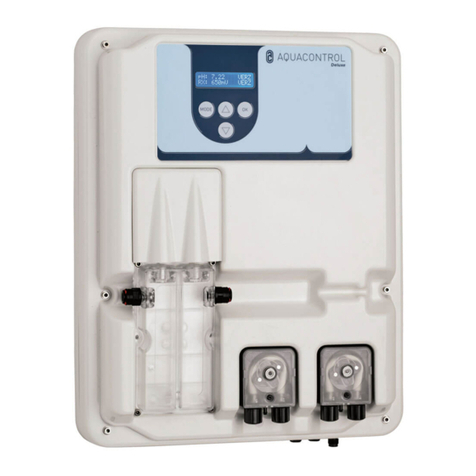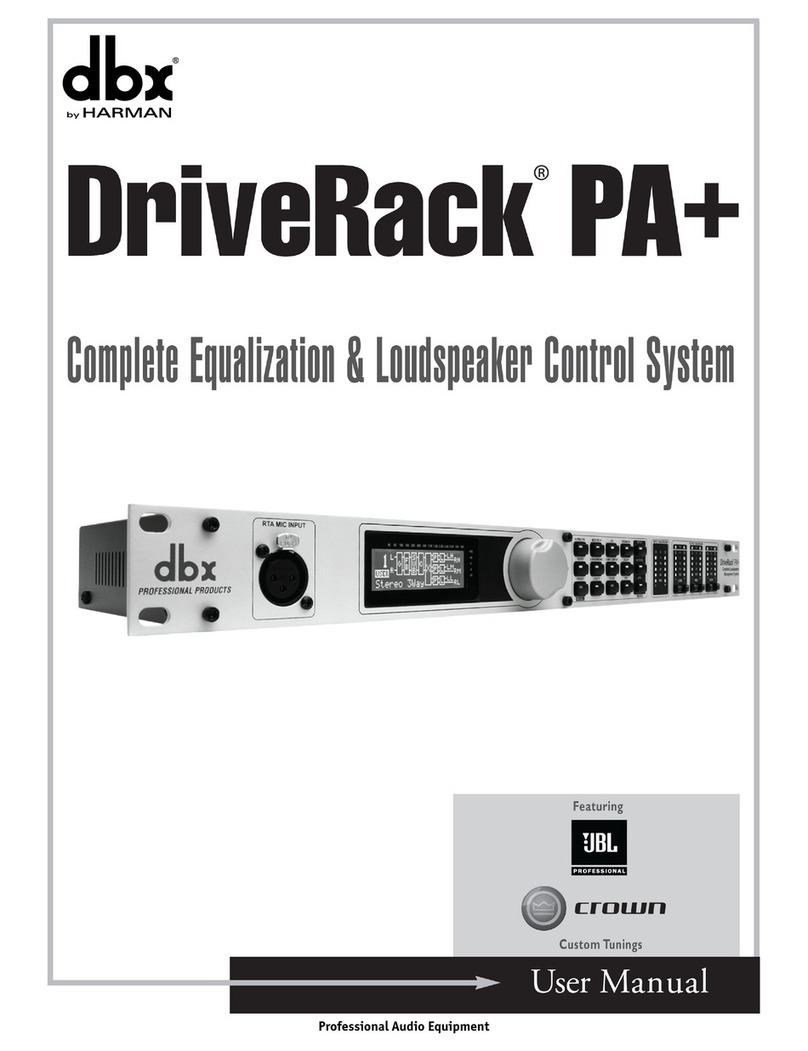Trinity Highway QuadGuard II User manual


QuadGuard
®
is a registered trademark of Energy Absorption Systems, Inc. Part No. 115270
© 2019 Trinity Highway Products, LLC
trinityhighway.com 1 Revision D September 2019
QuadGuard
®
II
The QuadGuard
®
II has been tested pursuant to National Cooperative Highway Research Program
(“NCHRP”) Report 350 specifications. The QuadGuard
®
II has been deemed eligible for federal-aid
reimbursement on the National Highway System by the Federal Highway Administration (“FHWA”).
Assembly Manual
2525 N. Stemmons Freeway
Dallas, Texas 75207
Warning:
The local highway authority, distributors, owners, contractors,
lessors, and lessees are RESPONSIBLE for the assembly, maintenance, and
repair of the QuadGuard
®
II. Failure to fulfill these RESPONSIBILITIES with
respect to the assembly, maintenance, and repair of the QuadGuard
®
II
system could result in serious injury or death.
Important:
These instructions are for standard assembly specified by the
appropriate highway authority. In the event the specified system assembly,
maintenance, or repair would require a deviation from standard assembly
parameters, contact a Trinity Highway representative. This system has been
deemed eligible by the FHWA for use on the national highway system under strict
criteria utilized by that agency.
This manual must be available to the worker overseeing and/or assembling the product at
all times. For additional copies, contact Trinity Highway directly at (888) 323-6374 or visit
trinityhighway.com.
The instructions contained in this manual supersede all previous information and manuals. All
information, illustrations, and specifications in this manual are based on the latest QuadGuard
®
II
information available to Trinity Highway at the time of printing. We reserve the right to make
changes at any time. Please contact Trinity Highway to confirm that you are referring to the most
current instructions.

trinityhighway.com 2 Revision D September 2019
Table of Contents
Customer Service Contacts..........................................................................................................3
Important Introductory Notes ........................................................................................................3
Safety Symbols.............................................................................................................................4
Safety Rules for Assembly............................................................................................................4
Limitations and Warnings..............................................................................................................5
System Overview..........................................................................................................................6
Inspect Shipping......................................................................................................................6
System Components...............................................................................................................7
Foundation/Anchoring.................................................................................................................12
Recommended Tools..................................................................................................................13
Site Preparation/Foundation.......................................................................................................15
Trinity Highway Approved Adhesive Anchoring System.............................................................16
Vertical Assemblies...............................................................................................................16
Anchor Assembly Cautions...................................................................................................17
Horizontal Assemblies...........................................................................................................18
How to Determine Left/Right.................................................................................................20
Counting the Number of Bays...............................................................................................20
Parallel (Narrow) Systems..........................................................................................................22
Assemble Parallel (Narrow)........................................................................................................23
Determine Backup and Transition Type................................................................................23
Flared (Wide) Systems ...............................................................................................................40
Assemble Flared (Wide) .............................................................................................................41
Determine Backup and Transition Type................................................................................41
QuadGuard®II Final Inspection Checklist...................................................................................57
Maintenance and Repair.............................................................................................................58
Inspection Frequency............................................................................................................58
Visual Drive-By Inspection....................................................................................................58
Walk-Up Checklist.................................................................................................................58
Post-Impact Instructions........................................................................................................59
Parts Ordering Procedure...........................................................................................................62

trinityhighway.com 3 Revision D September 2019
Customer Service Contacts
Trinity Highway is committed to the highest level of customer service. Feedback regarding the
QuadGuard
®
II, its assembly procedures, supporting documentation, and performance is always
welcome. Additional information can be obtained from the contact information below:
Trinity Highway
Telephone: (888) 323-6374 (USA)
+1 214 589-8140 (International)
Website: trinityhighway.com
Important Introductory Notes
The performance of the QuadGuard
®
II as designed, and approved for reimbursement by the
FHWA pursuant to its NCHRP Report 350 standard, is dependent upon the proper assembly,
deployment and future maintenance of the system. These instructions must be read in their
entirety and understood before assembling the QuadGuard
®
II. These instructions are to be used
in conjunction with the assembly of QuadGuard
®
II and are for standard assemblies only as
specified by the applicable highway authority. If you need additional information, or have
questions about the QuadGuard
®
II, please contact the highway authority that has planned and
specified this assembly and, if needed, contact Trinity Highway Customer Service. This product
must be assembled in the location specified by the appropriate highway authority. If there are
deviations, alterations, or departures from the assembly instructions specified in this manual, the
device may not perform as tested.
Important:
DO NOT use any component part that has not been specifically
specified herein for the QuadGuard
®
II during the assembly or repair (pp. 7 – 11 /
63 - 64).
This product has been specified for use by the appropriate highway authority and has been
provided to that user who has unique knowledge of how this system is to be assembled. No
person should be permitted to assemble, maintain, or repair this system that does not possess
the unique knowledge described herein. These instructions are intended for an individual
qualified to both read and accurately interpret them as written. These instructions are intended
only for an individual experienced and skilled in the assembly of highway products that are
specified and selected by the highway authority.
A manufacturer’s drawing package will be supplied by Trinity Highway upon request. Each
system will be supplied with a specific drawing package unique to that system. Such drawings
take precedence over information in this manual and shall be studied thoroughly by a qualified
individual who is skilled in interpreting them before the start of any product assembly.

trinityhighway.com 4 Revision D September 2019
Safety Symbols
This section describes the safety symbols that appear in this manual. Read the manual for
complete safety, assembly, operating, maintenance, repair, and service information.
Symbol Meaning
Safety Alert Symbol:
Indicates Important, Caution, Warning, or Danger. Failure
to read and follow the Important, Caution, Warning, or Danger indicators could
result in serious injury or death to the workers and/or bystanders.
Warning:
Read safety instructions thoroughly and follow the assembly directions
and suggested safe practices before assembling, maintaining, or repairing the
QuadGuard
®
II. It is the responsibility of the installer to follow these warnings.
Failure to comply with these warnings could result in increased risk of serious injury
or death in the event of a vehicle impact with a system.
Important:
Please keep up-to-date instructions for later use and reference by
anyone involved in the assembly of the product.
Safety Rules for Assembly
* Important Safety Instructions *
This manual must be kept in a location where it is readily available to persons who are skilled and
experienced in the assembly, maintenance, or repair of the QuadGuard
®
II. Additional copies of
this manual are available from Trinity Highway by calling (888) 323-6374, or by email at
questions concerning the information in this manual or about the QuadGuard
®
II.
It is the responsibility of the installer to use appropriate safety precautions when operating power
equipment, mixing chemicals, and when moving heavy equipment or QuadGuard
®
II components.
Safety articles including but not necessarily limited to work gloves, eye protection, safety-toe
shoes, and back support should be used.
Warning:
It is the responsibility of the installer to use all safety measures
incorporating appropriate traffic control devices specified by the highway authority.
These measures must be used to protect all personnel while at the assembly,
maintenance, or repair site.
Warning:
Failure to comply with these warnings could result in increased risk of
serious injury or death in the event of a vehicle impact with a system that has not
been accepted by the FHWA.
Warning:
Use only Trinity Highway parts on the QuadGuard
®
II for assembly,
maintenance, or repair. The use of component parts not specified herein is strictly
prohibited. The QuadGuard
®
II assembled with Trinity Highway parts has been
tested, approved, and accepted for state use by the FHWA. A QuadGuard
®
II using
parts other than those specified herein has not been tested,approved, or accepted
for state use by the FHWA. Failure to follow this warning could result in increased
risk of serious injury or death in the event of a vehicle impact.

trinityhighway.com 5 Revision D September 2019
Limitations and Warnings
Trinity Highway contracts with FHWA approved testing facilities to perform crash tests, evaluate
test results, and submit results to the FHWA for review.
The QuadGuard®II has been deemed eligible for reimbursement by FHWA as meeting the
requirements and guidelines of NCHRP Report 350. NCHRP Report 350 tests are designed to
evaluate product performance involving a range of vehicles on roadways, from lightweight cars
(approx. 1800 lb. [820 kg]) to full size pickup trucks (approx. 4400 lb. [2000 kg]). A product can
be certified for multiple Test Levels. The QuadGuard®II system is certified to the Test Level(s) as
shown below:
Test Level 2: 43 mph [70 km/h]
Test Level 3: 62 mph [100 km/h]
These FHWA directed tests are not intended to represent the performance of systems
when impacted by every vehicle type or every impact condition existing on the roadway.
This system is tested only to the test matrix criteria of NCHRP Report 350 as approved by
FHWA.
Trinity Highway expressly disclaims any warranty or liability for injury or damage to persons or
property resulting from any impact, collision or harmful contact with products, other vehicles, or
nearby hazards or objects by any vehicle, object or person, whether or not the products were
assembled in consultation with Trinity Highway or by third parties.
The QuadGuard®II is intended to be assembled, delineated, and maintained within specific state
and federal guidelines. It is important for the highway authority specifying the use of a highway
product to select the most appropriate product configuration for its site specifications. The
customer should be careful to properly select, assemble, and maintain the product. Site lay out,
vehicle population type; speed, traffic direction, and visibility are important elements that require
evaluation in the selection of a highway product. For example, curbs could cause an untested
effect on an impacting vehicle.
After an impact occurs, the debris from the impact should be removed from the area immediately
and the specified highway product should be evaluated and restored to its original specified
condition or replaced as the highway authority determines as soon as possible.
Warning: Do not assemble, maintain, or repair the QuadGuard®II until you have
read this manual thoroughly and completely understand it. Ensure that all Danger,
Warning, Caution, and Important statements within the manual are completely
followed. Please call Trinity Highway at (888) 323-6374 if you do not understand
these instructions.
Warning: Ensure that all of the QuadGuard®II Danger, Warning, Caution, and
Important statements within the QuadGuard®II manual are completely followed.
Failure to follow this warning could result in serious injury or death in the event of
a collision.

trinityhighway.com 6 Revision D September 2019
System Overview
The QuadGuard
®
II is a re-directive, non-gating crash cushion for roadside obstacles ranging in
width from 24" to 126" (610 mm to 3200 mm). It consists of energy-absorbing cartridges
surrounded by a framework of Quad-Beam Panels.
Important:
Trinity Highway makes no recommendation whether use or
reuse of any part of the system is appropriate or acceptable following an
impact. It is the sole responsibility of the project engineer and/or the local
highway authority and its engineers to make that determination. It is critical
that you inspect this product after assembly is complete to make certain that
the instructions provided in this manual have been strictly followed.
The QuadGuard
®
II utilizes two types of cartridges in a staged configuration designed to address
both lighter cars and heavier, high center-of-gravity vehicles. Its modulardesign allows the system
length to be tailored to the design speed of a site.
Impact Performance
The 5 Bay QuadGuard
®
II has successfully passed the requirements outlined in NCHRP Report
350, Test Level 3 tests with both the light car and pickup at speeds of up to 62 mph [100 km/h] at
angles up to 20 degrees.
During head-on impact testing, within NCHRP Report 350 criteria, the QuadGuard
®
II is designed
to telescope rearward to absorb the energy of impact. When impacted from the side, within the
applicable NCHRP Report 350 criteria, it is designed to redirect the vehicle back toward its original
travel path and away from the roadside obstacle.
Warning:
Do not modify the QuadGuard
®
II in any way.
Warning:
It is the responsibility of the project engineer and / or local highway
authority and its engineer to ensure that the QuadGuard
®
II and delineation used
meet all federal, state, specifying agency, and local specifications.
Warning:
It is the responsibility of the project engineer and / or local highway
authority and its engineer to ensure delineation on the assembly meets all
appropriate Manual on Uniform Traffic Control Devices (“MUTCD”) and local
standards.
Inspect Shipping
Before deploying the QuadGuard
®
II, check the received parts against the shipping list supplied
with the system. Make sure all parts have been received.
Important:
The Manufacturer’s Drawing Package supplied with the
QuadGuard
®
II must be used with these instructions for proper assembly and
should take precedence over these general instructions.

trinityhighway.com 7 Revision D September 2019
System Components
Below is a list of system components to be used in the repair of your particular QuadGuard
®
II
configuration. Please call Trinity Highway customer support if you have any system questions
(p. 3).
Warning:
Use only Trinity Highway parts that are specified herein for the
QuadGuard
®
II for assembling, maintaining, or repairing the QuadGuard
®
II. Do
not utilize or otherwise comingle parts from other systems even if those
systems are other Trinity Highway systems. Such configurations have not been
tested, nor have they been deemed eligible for use. Assembly, maintenance, or
repairs using unspecified parts or accessories is strictly prohibited.
Note:
Components are not shown to scale.
Narrow Diaphragm Assemblies *Wide Diaphragm Assemblies *
625650 - 24”
625651 - 30”
625652 - 36”
606810 - 48”
607173 - 26.48”
607174 – 29.65”
607175 – 32.78”
607176 – 35.93”
607177 – 39.08”
607145 – 42.23”
607146 – 45.38”
607148 – 48.53”
607149 – 50.11”
607150 – 51.68”
607151 – 54.83”
607152 – 57.98”
607156 – 59.56”
607157 – 61.13”
607158 – 64.28”
607159 – 68.06”
607160 – 70.58”
607162 – 73.73”
607163 – 76.88”
607164 – 80.04”
Nose, Narrow Assembly *Nose, Narrow Assembly 48” * Nose, Wide Assembly *
611580 - Galvanized
611581 - Yellow
611579 - Black
611577 - Galvanized
611578 – Yellow
611576 - Black
611583 – Galvanized
611584 – Yellow
611582 - Black
* Assemblies include multiple parts.

trinityhighway.com 8 Revision D September 2019
Mushroom Washer Flat Screw 5/8X8 1/2" Wide Die Spring, 6”, Wide
617045 116879 117458
Flat Screw 5/8X5”,G8, Narrow Die Spring, 1 1/2”, Narrow Rail Nut, Hex, 5/8”
116878 117459 003340
Rail Bolt, 5/8X2” Panel, Fender Assembly, QG Washer, Flat, 5/8” X 1 3/4"
003400 608236 003300
Nose, L, Wide, W/Logo Nose, R, Wide, W/Logo Bracket, Cart Support, Nose
611672 611683 605430
* Parts in red are included in assemblies.

trinityhighway.com 9 Revision D September 2019
Nose, L, Narrow, W/Logo Nose, R, Narrow, W/Logo Bracket, Cart, Nose
611669 611680 605420
Bolt, Hex, 5/8” X 2 1/2", G5 Bolt, Hex, 1/4" X 3/4", G5 Bracket, Cartridge Support
118232 113518 605446
Bolt, Bt, 5/8” X 1 1/4", Hex
Socket Bolt, Hex, 5/8” X 2”, G5 Nut, Hex, 1/4"
113404 118570 115946
Nut, Hex, Coupling, 5/8” 11” X
2 1/8” Washer, Lock, 1/4" Washer, Lock, 5/8”
115986 118085 118100
* Parts in red are included in assemblies.

trinityhighway.com 10 Revision D September 2019
Bracket, Angle, 2” X 1”,
W/Holes Washer, Flat 3/8” X 1” Nut, Hex, 3/8”
617387 118036 115960
Bolt, Hex, 3/8” X 1”,G5 Washer, Fender, 3/8” X 2” Bolt, Hex, 5/8” X 1 1/2", G5
113596 118038 113654
Bracket, Pull-Out Shim Kit, 1/8” X 3 5/8” X 8”(2) Washer, Lock, 3/4"
605535 614050 118089
Bolt, Hex, 3/4" X 2”, G8 Monorail Guide Nut, Heavy Hex, 3/4”
113555 611368 003704
* Parts in red are included in assemblies.

trinityhighway.com 11 Revision D September 2019
Nut, Heavy Hex, 5/8” Hinge Plate, Fender Panel Bolt, Hex, 5/8” X 4”, G5
003354 610172 113666
Panel, Side, QG Bracket, Cartridge Support
TS B/U Locking Bar, Cartridge
Support
611898 605447 611266
Anchor Kit, Hilti, 3/4” X 7” (4) * Stud, 3/4” X 7”, G5 Washer, Flat, 3/4” X 2”
619316 117542 118027
*See Trinity Highway Approved Adhesive Anchoring System section on page 16.
Cartridge Assy, Type I Cartridge Assy, Type II
606027 606029
* Parts in red are included in assemblies.

trinityhighway.com 12 Revision D September 2019
Foundation/Anchoring
Important: It is the responsibility of the local DOT or appropriate authority to
ensure this assembly conforms to the AASHTO Roadside Design Guide.
Warning: It is the responsibility of the installer to ensure that your assembly
procedure meets all appropriate Occupational Safety and Health Administration
(OSHA) and local standards.
Asphalt Installations
QuadGuard®II Narrow systems with a Tension-Strut Backup may be temporarily installed in
construction zones on asphalt. Assemblies on Asphalt Concrete (“A.C.”) must provide a minimum
of 3” [76 mm] layer of asphalt over a minimum of 3” [76 mm] layer of Portland Cement Concrete
(“P.C.C.”), 6” [152 mm] layer of asphalt over 6” [152 mm] layer of subbase, or 8” [203 mm] layer
of asphalt with no subbase.
Important: Only 18” [460 mm] threaded rods, utilizing Trinity Highway approved
adhesive, can be used with asphalt foundations. Contact Customer Service for a
complete list of approved adhesives (p. 3).
Concrete Installations
For concrete installations, the QuadGuard®II should be installed only on an existing or freshly
placed and cured concrete base (4000 psi [28 MPa] minimum). Orientation of the concrete base
and the attenuator must comply with the project plans or as otherwise determined by the project
engineer or appropriate highway authority.
The QuadGuard®II may be installed on any of the following foundations using the specified
anchorage:
Foundation A: Concrete Pad or Roadway
Foundation: 6” [150 mm] minimum depth P.C.C.
Anchorage: Approved adhesivewith 7” [180 mm] studs 5 1/2” [140 mm] embedment
Foundation B: Asphalt over P.C.C.
Foundation: 3” [76 mm] minimum A.C. over 3” [76 mm] minimum P.C.C.
Anchorage: Length of anchor required is 18” [460 mm] 16 1/2” [420 mm] embedment
Foundation C: Asphalt over Compacted Subbase (“C.S.”)
Foundation: 6” [150 mm] minimum A.C. over 6” [150 mm] minimum C.S.
Anchorage: Approved adhesive with 18” [460 mm] studs 16 1/2” [420 mm] embedment
Foundation D: Asphalt Only
Foundation: 8” [200 mm] minimum A.C.
Anchorage: Approved adhesive with 18” [460 mm] studs - 16 1/2” [420 mm] embedment
Important: Systems mounted on asphalt must be replaced and mounted on
fresh, undisturbed asphalt if more than 10% of anchors are found to be loose,
broken, or show signs of pull out. If 10% or fewer anchors are damaged, replace
the damaged anchors in the existing asphalt. Anchor bolts used on systems
mounted on asphalt must be inspected every six months. See Post Impact
Instructions and Maintenance and Repair instructions on page 58.

trinityhighway.com 13 Revision D September 2019
Recommended Tools
Documentation
Manufacturer’s Assembly Manual
Manufacturer’s Drawing Package
Personal Protective Equipment
Eye Protection
Gloves
Safety Toe Shoes
Cutting Equipment
Rotary Hammer Drill
Rebar Cutting Bit
Concrete Drill Bits – 7/8” [22 mm] (Double-Fluted)
Grinder, Hacksaw or Torch (optional)
Drill Bits 1/16” through 7/8”
Important: Trinity Highway recommends using double-fluted drill bits to achieve
optimum tensile strength when applying an approved adhesive to the anchoring
system (p. 16).
Hammers
Sledgehammer
Standard hammer
Wrenches
Heavy Duty 1/2” drive impact wrench
1/2" drive Sockets: 9/16", 11/16", 3/4", 15/16", 1 1/8", 1 1/4"
1/2" drive Deep Well Sockets: 15/16", 1 1/4”
1/2" drive Ratchet and Attachments
1/2" drive Breaker Bar – 24” long
1/2" drive Torque Wrench: 200 ft-lb
Crescent Wrench: 12” [300 mm]
Allen Wrench: 3/8”
Important: Trinity Highway makes no recommendation whether use or
reuse of any part of the system is appropriate or acceptable following an
impact. It is the sole responsibility of the project engineer and/or the local
highway authority and its engineers to make that determination. It is critical
that you inspect this product after assembly is complete to make certain that
the instructions provided in this manual have been strictly followed.

trinityhighway.com 14 Revision D September 2019
Miscellaneous
Traffic Control Equipment
Lifting and moving equipment (A lifting device is preferred although a forklift can be used.)
Minimum 5,000 lb. capacity required.
Air Compressor (100 psi minimum) and Generator (5 kW)
Long Pry Bar
Drift Pin 12” [300 mm]
Center Punch
Tape Measure 25’ [7.5 m]
Chalk Line
Concrete Marking Pencil
7/8” Diameter steel tube brush for cleaning drilled boreholes
Rags, water, and solvent for clean up
Note: The above list of tools is a general recommendation and should not be considered
an exhaustive list. Depending on specific site conditions and the complexity of the
assembly specified by the appropriate highway authority the required tools may vary.
Decisions as to what tools are needed to perform the assembly properly are entirely the
responsibility of the specifying highway authority and the authority’s selected contractor
performing the assembly of the system at the authority’s specified assembly site.

trinityhighway.com 15 Revision D September 2019
Site Preparation/Foundation
A QuadGuard
®
II system should be assembled only on an existing or freshly placed and cured
concrete base (28 MPa [4000 psi] minimum). Location and orientation of the concrete base and
attenuator must comply with project plans or as otherwise determined by the local highway
authority.
Recommended dimension and reinforcement specifications for new concrete foundations are
provided in Trinity Highway concrete foundation drawings, supplied with the system. The system
may be assembled on a non-reinforced concrete roadway (minimum 8” [200 mm] thick).
Deployment cross-slope shall not exceed 8% and should not twist more than 2% over the length
of the system; the foundation surface shall have a light broom finish.
Warning:
It is the responsibility of the appropriate highway authority to select the
location for the QuadGuard
®
II in accordance with the AASHTO Roadside Design
Guide. Trinity Highway is not responsible for choosing the location for system
placement.
Warning:
Ensure proper site grading for QuadGuard
®
II
placement as directed
by the state or specifying agency pursuant to the AASHTO Roadside Design
Guide.
Caution:
Accurate placement of all steel rebar is critical toavoid interference with
the concrete anchor bolts.
Warning:
Location of the Backup in relation to nearby objects will affect the
operation of the attenuator. Upon impact, the Fender Panels are designed to
telescope rearward and extend beyond the rigid Backup as much as 30” [760 mm]
from their pre-impact location. Position the Backup so that the rear ends of the last
Fender Panels are a minimum of 30” [760 mm] forward of objects that would
otherwise interfere with movement of the rearmost Fender Panels. Failure to
comply with this requirement is likely to result in system performance that has not
been crash tested pursuant to NCHRP Report 350 criteria and may also cause
component damage which will necessitate maintenance or replacement of the
system.
Important:
It is critical that you inspect this product after assembly is complete
to ensure the instructions provided in this manual have been strictly followed.
Figure 1
Cross-Slope

trinityhighway.com 16 Revision D September 2019
Trinity Highway Approved Adhesive Anchoring System
A Trinity Highway approved adhesive anchoring system is required to securely anchor crash
cushions. Each approved adhesive kit contains adhesive, studs, nuts and washers. Both vertical
and horizontal assemblies are possible using an approved adhesive anchoring system.
Vertical Assemblies
Note: Read all Trinity Highway approved adhesive instructions before starting.
1) Prepare the Concrete Foundation
Warning: Do not allow anchoring adhesive to contact skin or eyes. See safety
data sheet supplied with adhesive kit for first-aid procedures. Use only in well-
ventilated area. Do not use near open flame.
Warning: Wear gloves and eye protection during application.
The studs that anchor the QuadGuard®II Backup and/or Monorail sections to the concrete
foundation must be those shipped in the kit or of high strength steel (120,000 psi [830 MPa]
minimum tensile strength or equal). These studs must be set in minimum 4000 psi [28 MPa]
concrete. Allow the concrete to cure a minimum of seven days before applying anchoring
adhesive.
2) Drill Boreholes
Caution: It is the responsibility of the installer to consult OSHA silica
respiratory standard 29 CFR 1910.134 for debris removal from borehole(s)
and use Trinity Highway approved adhesive to achieve optimum tensile
strength. Do not use diamond drill bits for drilling boreholes.
Use the Monorail(s) and Tension Strut Backup as drilling templates. Use a rotary hammer drill
to drill the boreholes 7/8” [22 mm] diameter to the recommended depth. See the approved
adhesive instructions provided with your kit. Check to ensure each borehole is drilled to the
proper depth and aligned with the part to be anchored per chart below.
Anchoring Information
Stud Size: Orientation Bit Size Minimum Depth Torque Medium
3/4”x 6 1/2" Horizontal 7/8” [22 mm] 5 1/4” [133 mm] Manufacturer Spec Concrete
3/4”x 7" Vertical 7/8” [22 mm] 5 3/4” [145 mm] Manufacturer Spec Concrete
3/4”x 18" Vertical 7/8” [22 mm] 16 3/4” [425 mm] 10 ft-lb [15 N-m] Asphalt
Important: When mounting on asphalt, initial torque shall be as shown
above. Due to the properties of asphalt, anchors may loosen over time. For
this reason Trinity Highway recommends anchoring to asphalt only at
temporary locations. It is recommended to re-torque anchors in asphalt
every six (6) months to the proper initial torque specified.

trinityhighway.com 17 Revision D September 2019
3) Clean the Boreholes
Blow the concrete dust from the borehole using oil-free compressed air. Thoroughly brush it
with a 7/8” diameter steel bristle tube brush and then blow it out again. If the borehole is wet,
completely flush it with water while brushing and then blow it clean to remove all water using
oil-free compressed air.
Note: Use of the Trinity Highway approved vacuum drilling equipment is authorized to replace
the blowing and brushing requirement of Step 3.
4) Apply Approved Adhesive
Fill the borehole 100% full.
Caution: Fill borehole 100% full so it is even with the pavement surface per
manufacturer’s instructions.
5) Add Nuts to Anchor Studs
Place a flat washer onto the stud then thread a nut on until the end of
the stud is flush with the nut (Figure 2).
6) Insert Studs in Boreholes and Wait for Adhesive to Cure
Push the stud down through the part to be anchored and into the
borehole.
Caution: Do not disturb or load the stud until the approved
adhesive material has hardened (see instructions supplied
with the approved adhesive kit).
7) Torque the Nuts
Once the adhesive has fully cured, torque the nut to the adhesive
manufacturer’s recommended values.
Anchor Assembly Cautions
1) Steel rebar
If steel rebar is encountered while drilling an anchor bolt borehole, apply one of the following
solutions:
A) Use a rebar drill bit for the rebar only and then switch back to the concrete bit to finish
drilling into the underlying concrete until the proper borehole depth is reached.
Caution: Do not drill through rebar without first obtaining permission to do so
from the project engineer.
B) Drill a new borehole down at an angle past the rebar to the proper depth. Anchor the
stud by completely filling both boreholes with an approved adhesive.
Figure 2
Vertical Application
(Before Applied Torque)

trinityhighway.com 18 Revision D September 2019
Horizontal Assemblies
The horizontal approved adhesive kit is the same as the vertical kit.
Caution:
Fill borehole 100% full so it is even with the surface of the hole per
manufacturer’s instructions.
1) Follow the instructions supplied with your approved adhesive kit
Apply approved adhesive to each anchor per instructions.
2) Add the Washers and Nuts
Put washer and nut on stud so the nut is flush with end of stud.
3) Insert each Stud with Washer and Nut into Borehole
Push stud with washer and nut into borehole.
Important:
The stud should be flush with the top of the nut in both vertical and
horizontal applications prior to tightening (Figure 3).
Warning:
Do not disturb or load the stud until the approved adhesive material
has hardened (see approved adhesive kit instructions for cure times and
torque values).
4) Torque the nuts
Once the adhesive has fully cured, torque nut(s) to the approved adhesive manufacturing
specification.
Figure 3
Horizontal Application
(Before Applied Torque)

trinityhighway.com 19 Revision D September 2019
(Five Bay systems with Tension Strut Backups shown, except as noted)
Key
1) Cartridge
2) Diaphragm
3) Quad-Beam Fender Panel
4) Nose
5) Monorail
6) Backup
7) Side Panel
Figure 4 Plans & Elevation
7
QG2100126
Other manuals for QuadGuard II
1
Table of contents
Other Trinity Highway Control System manuals
Popular Control System manuals by other brands
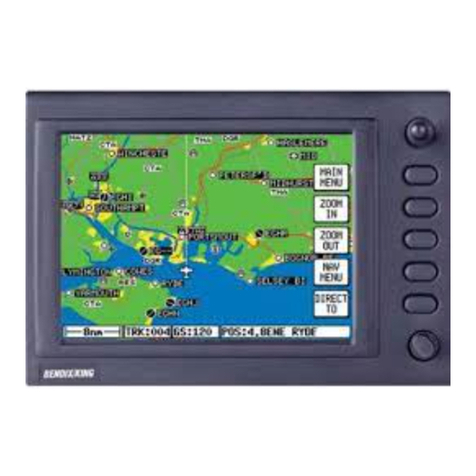
BENDIXKing
BENDIXKing Skymap IIIC pilot's guide
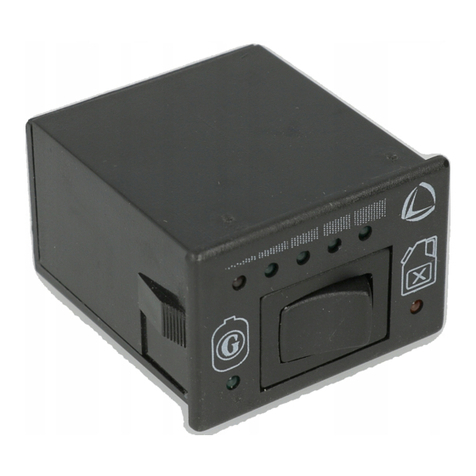
Landi Renzo
Landi Renzo A1 V05 Installation and adjustment manual
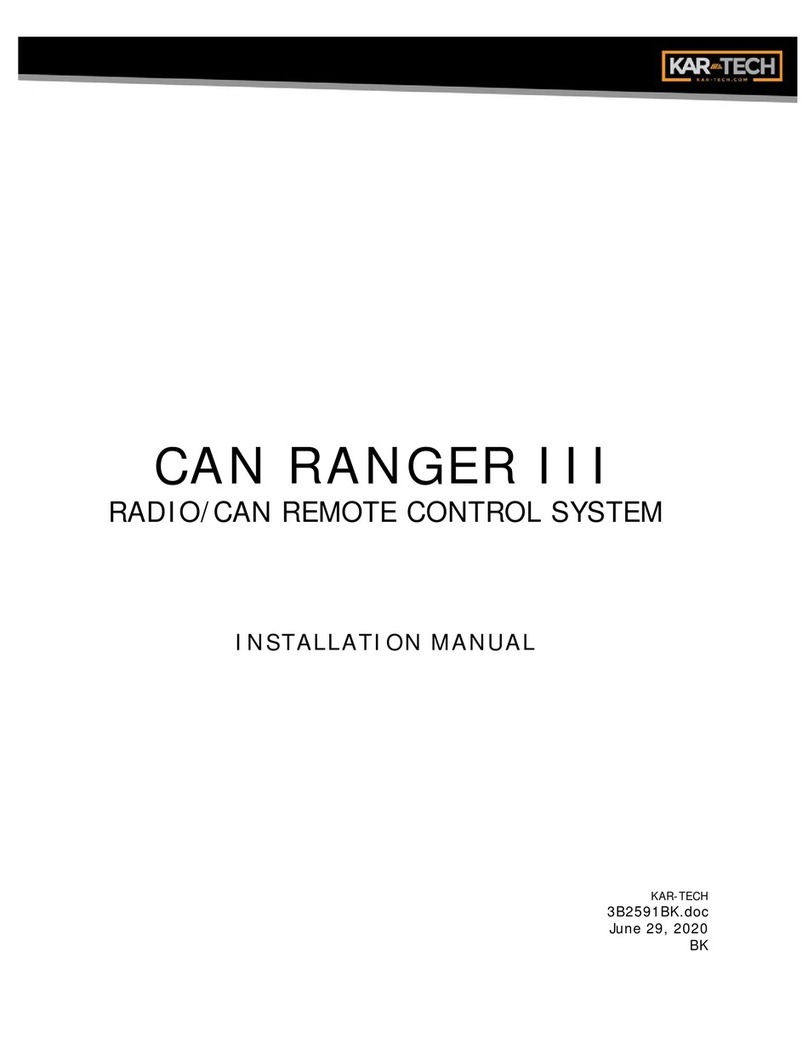
KAR-TECH
KAR-TECH CAN RANGER III installation manual
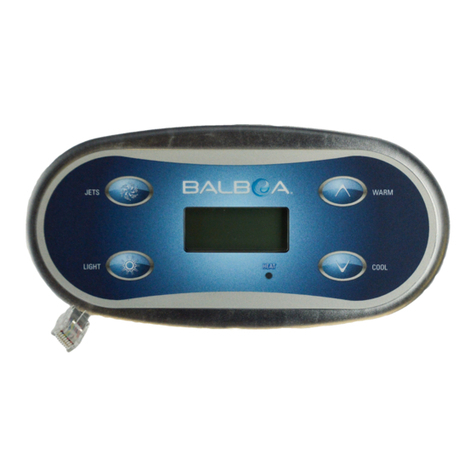
Balboa
Balboa Balboa VS300 quick start guide
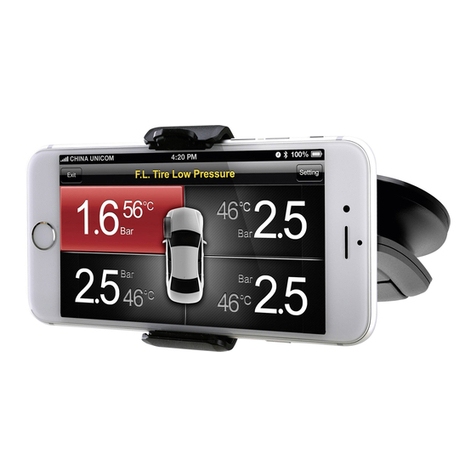
Conrad
Conrad TPMS-8886 operating instructions
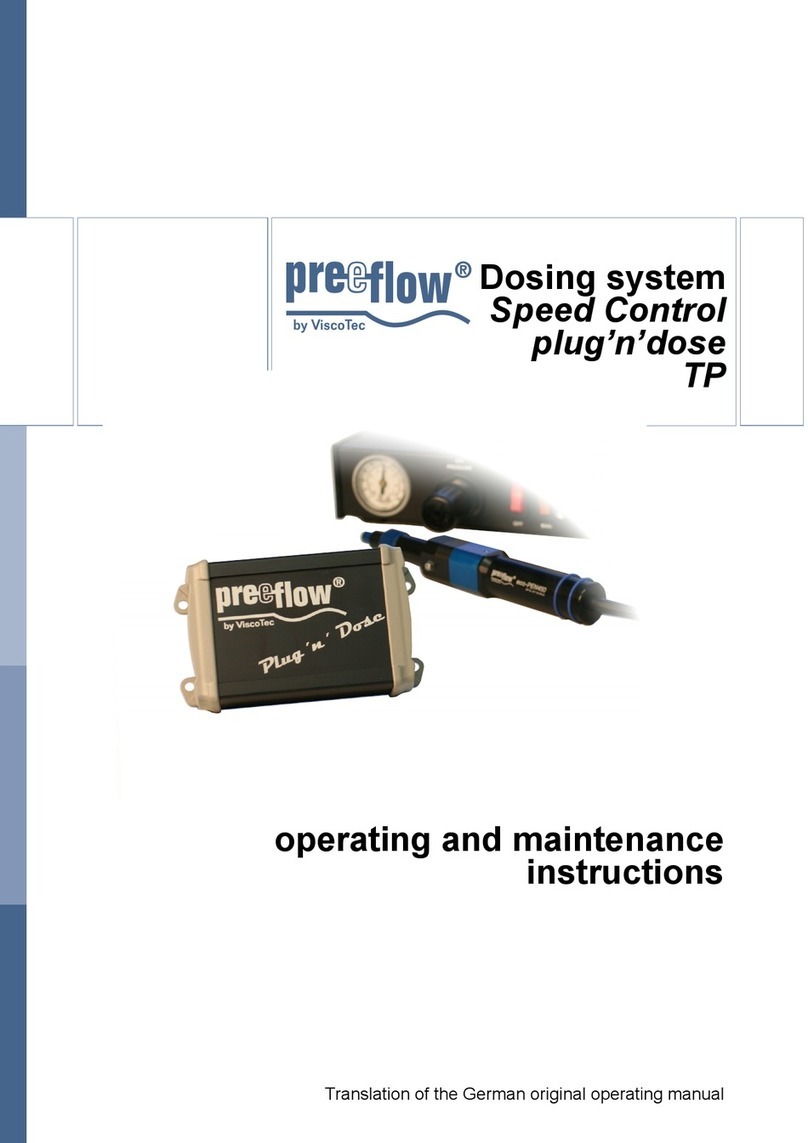
ViscoTec
ViscoTec PreeFlow plug'n'dose TP Operating and maintenance instructions
